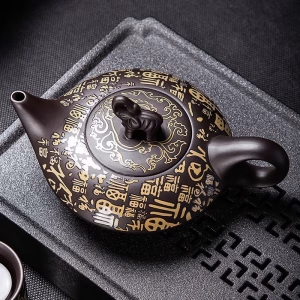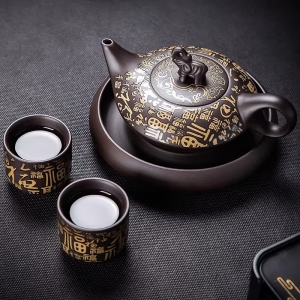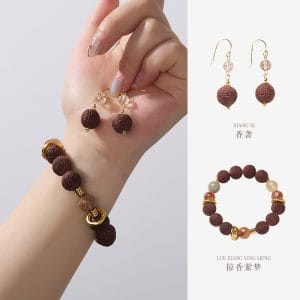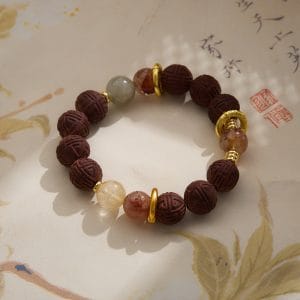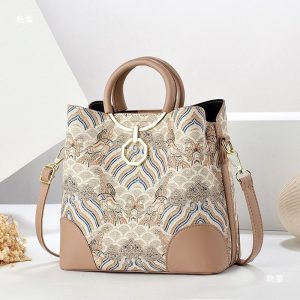The Modern Luck EconomyIn recent years, the concept of luck has evolved from a mystical, intangible force into something increasingly commodified and personalized. Market trends show a growing consumer appetite for products and practices that promise to tilt fate in their favor—whether through mindfulness apps, symbolic jewelry, or wellness rituals. This isn’t just superstition repackaged; it’s a reflection of our collective desire for control in an unpredictable world. Industry reports suggest that spending on luck-enhancing products and services has grown by around 6%–12% annually over the past five years, signaling a shift toward proactive, rather than passive, approaches to fortune. From manifestation journals to Feng Shui consultations, people are investing not just money but intention into crafting their own luck. This trend speaks to a deeper human need: the longing for agency. In a time of global uncertainty, creating luck feels less like a frivolous pursuit and more like a strategic act of self-care.
 handmade cultural gifts and luck-enhancing items like crystals, journals, and symbolic jewelry arranged on a wooden table" loading="lazy" style="max-width:100%;height:auto">
handmade cultural gifts and luck-enhancing items like crystals, journals, and symbolic jewelry arranged on a wooden table" loading="lazy" style="max-width:100%;height:auto">What’s particularly fascinating is how this trend intersects with broader cultural movements. The rise of mindfulness and wellness has normalized practices that were once niche or esoteric. Crystal healing, for example, has moved from alternative subcultures to mainstream retailers, with customers buying amethyst for clarity or citrine for abundance. Similarly, astrology apps have millions of users who check their daily horoscopes not just for entertainment, but for actionable insights. This blending of ancient wisdom with modern technology highlights a key market insight: today’s consumer wants luck to be both accessible and personalized. They’re not looking for one-size-fits-all solutions; they want tools that resonate with their individual journey. This demand for customization is driving innovation, from algorithm-generated lucky numbers to personalized talismans designed based on birth charts or intentions.
Cultural Artifacts and Personal RitualsOne of the most heartfelt trends in the luck market is the resurgence of handmade cultural gifts. These items—often crafted with intention and tradition—carry a weight that mass-produced trinkets simply can’t match. I remember receiving a dreamcatcher from a close friend who had learned the art from her Ojibwe grandmother; it wasn’t just a decorative piece but a symbol of protection and positive energy. This personal connection transforms the object from a mere commodity into a vessel of meaning. In markets today, we see similar items gaining popularity: hand-painted Hamsa amulets, intricately woven evil eye bracelets, or hand-carved wooden charms from Japan. These artifacts often come with stories, rituals, or blessings, making them more than just purchases—they become part of the buyer’s narrative. This trend underscores a broader shift toward authenticity and cultural appreciation in consumer behavior.
Beyond physical objects, rituals are also having a moment. From lighting a specific candle during meditation to carrying a lucky coin in your pocket, these small, repeatable actions create a sense of ritualistic control. I’ve adopted a simple practice: each morning, I write down one thing I’m grateful for and one intention for the day. It takes less than a minute, but it sets a proactive tone, making me feel like I’m inviting opportunity rather than waiting for it. This isn’t about magical thinking; it’s about mindset. Studies in positive psychology support this, showing that rituals can reduce anxiety and increase feelings of self-efficacy. In a market saturated with quick fixes, these personalized rituals stand out because they require engagement. They’re not passive; they’re participatory, which makes the luck they attract feel earned rather than given.
Practicality is key when integrating luck-boosting habits into a busy life. One good find I always recommend is a gratitude journal specifically designed with prompts for reflection and intention-setting. Brands like ‘The Five Minute Journal’ offer structured formats that make it easy to build a daily ritual without feeling overwhelmed. Another tip is to incorporate symbolic items into your environment in meaningful ways—for example, placing a small citrine crystal on your desk as a reminder to focus on abundance, or wearing a piece of jewelry that symbolizes protection during stressful times. The goal isn’t to clutter your space with superstitious objects, but to choose a few that hold personal significance and use them as anchors for positive thinking. This approach aligns with the trend toward mindful consumption: investing in fewer, higher-quality items that serve a purpose beyond aesthetics.
Looking ahead, the luck market shows no signs of slowing down. As technology continues to advance, we’re seeing the emergence of digital luck-enhancers, from apps that use AI to suggest auspicious dates for important events to virtual reality meditation spaces designed to amplify manifestation practices. Yet, despite these high-tech innovations, the core driver remains deeply human: the desire for connection, meaning, and a sense of control. The most successful products and services will be those that balance novelty with authenticity, offering new tools while respecting the timeless appeal of tradition. This duality—ancient wisdom meets modern convenience—is what makes this market so dynamic. It’s not about replacing old beliefs but evolving them to fit contemporary lives.
Ultimately, improving luck is less about finding a magical solution and more about cultivating habits and environments that foster opportunity. Market trends reflect this nuanced understanding, moving away from gimmicks and toward holistic, integrated approaches. Whether it’s through a handmade cultural gift that connects us to heritage, a daily ritual that grounds us, or a tech tool that helps us visualize our goals, the common thread is intentionality. Luck, in this context, becomes a partnership between effort and openness—a dance between doing what you can and being ready for what comes. And perhaps that’s the most valuable trend of all: the recognition that we are co-creators of our fortune, armed with both ancient symbols and modern insights.
You may also like
Aladdin’s Lamp Heat-Change Purple Clay Tea Pot
Original price was: $108.00.$78.00Current price is: $78.00. Add to cartThe Palace Museum Paper-Cut Light Art Fridge Magnets: Chinese Cultural Style Creative Gift Series
Price range: $27.00 through $36.00 Select options This product has multiple variants. The options may be chosen on the product pageHandwoven Zhuang Brocade Tote Bag – Large-Capacity Boho Shoulder Bag
Original price was: $178.00.$154.00Current price is: $154.00. Add to cartAncient Craft Herbal Scented Bead Bracelet with Gold Rutile Quartz, Paired with Sterling Silver (925) Hook Earrings
Original price was: $322.00.$198.00Current price is: $198.00. Add to cartGuangxi Zhuang Brocade Handmade Tote – Ethnic Boho Large-Capacity Shoulder Bag
Original price was: $172.00.$150.00Current price is: $150.00. Add to cartAncient Craftsmanship & ICH Herbal Beads Bracelet with Yellow Citrine & Silver Filigree Cloud-Patterned Luck-Boosting Beads
Original price was: $128.00.$89.00Current price is: $89.00. Add to cart

